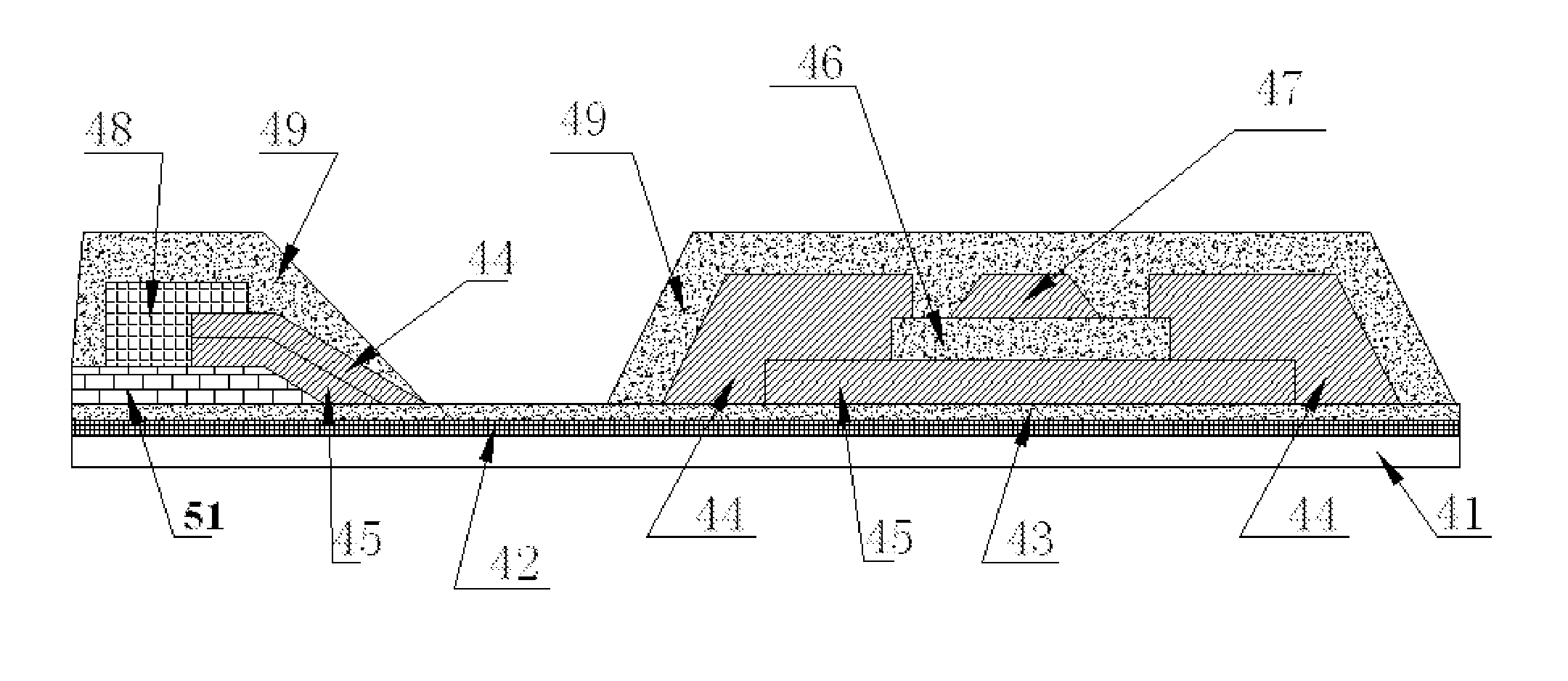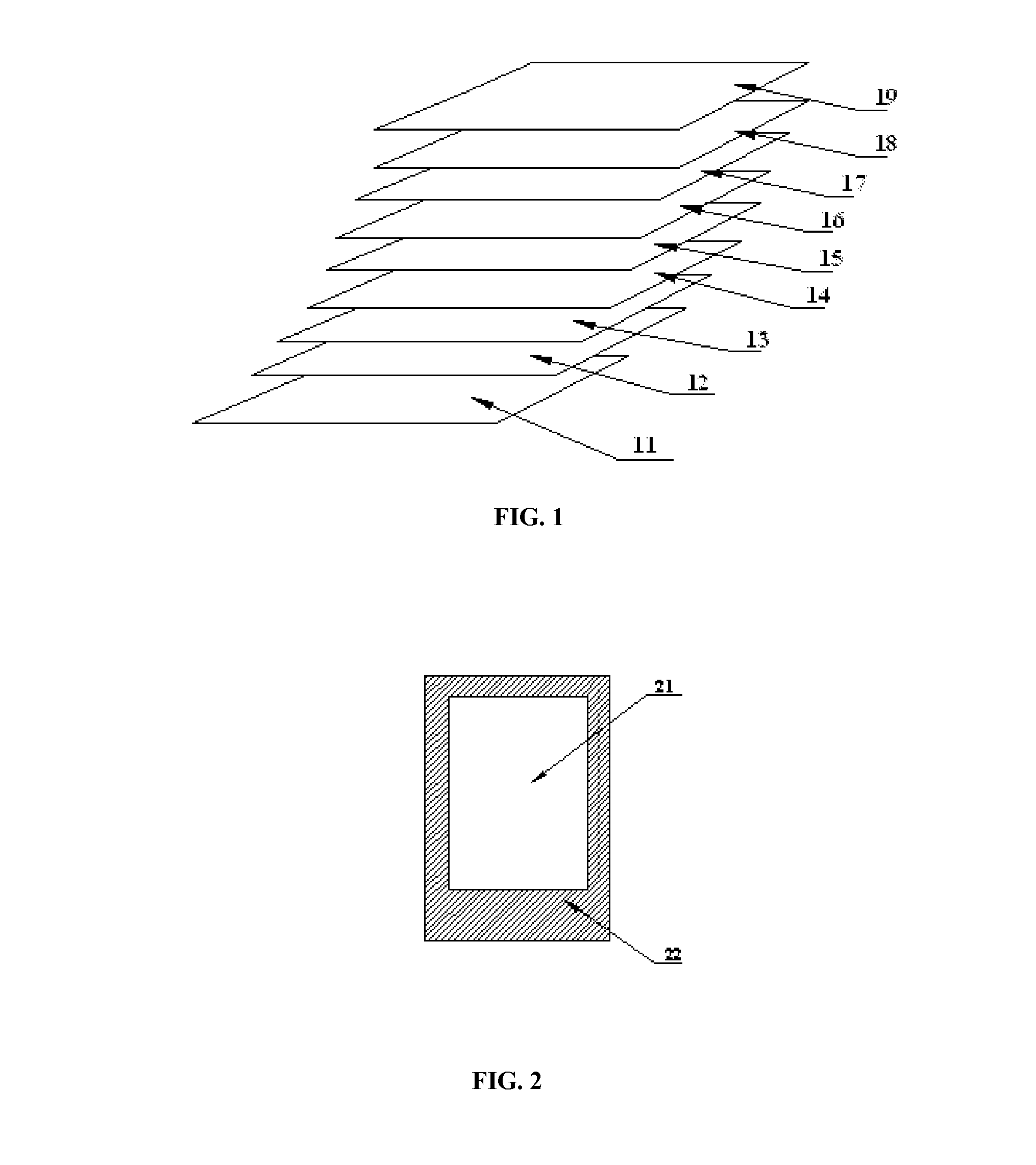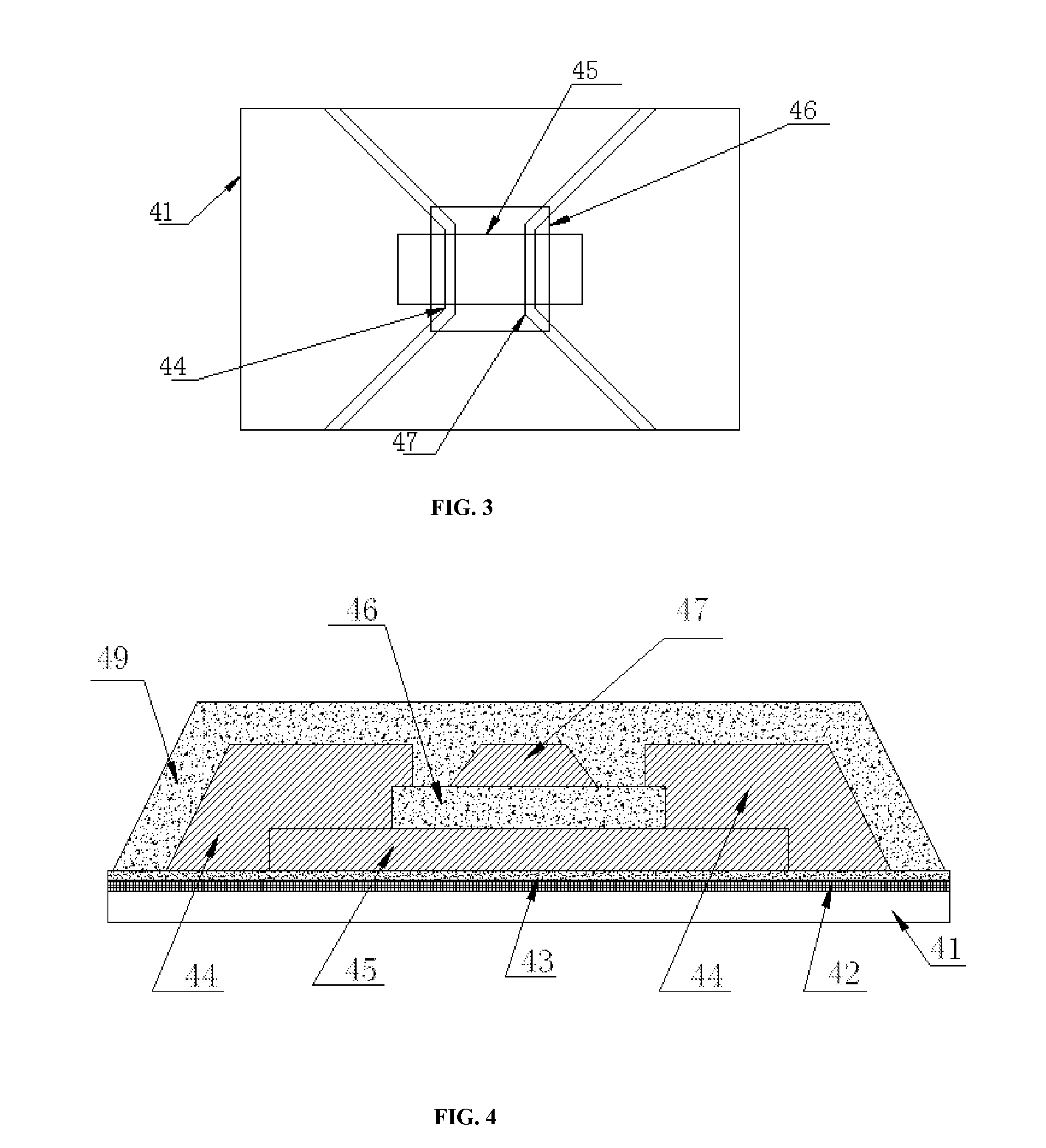Novel ITO crossover integrated capacitive touch screen and manufacturing method thereof
- Summary
- Abstract
- Description
- Claims
- Application Information
AI Technical Summary
Benefits of technology
Problems solved by technology
Method used
Image
Examples
Embodiment Construction
[0031]In the following parts are further descriptions of the present invention with reference to the preferred embodiments.
[0032]As shown in FIGS. 1 and 2, the said ITP crossover capacitive touch screen comprises of the chemically tempered glass substrate or resin substrate (thickness 0.5 mm˜2.0 mm) 11, and of the silica layer 12, niobium pentoxide layer 13, black resin layer 14, ITO crossover electrode 15, first insulation layer 16, ITO electrode 17, metal electrode 18 and second insulation layer 19 that are sequentially laminated on the transparent substrate. The said ITO crossover electrodes 15 include the crossover electrode in the display screen and overlapping electrode at the edge of the black-resin layer, both of which have regularly patterned structure, and can be shaped as rhombus, bar, square, snowflake or cross.
[0033]The said transparent substrate comprises of window section 21 and non-window section 22, with the black resin arranged in the non-window section 22 of the d...
PUM
 Login to View More
Login to View More Abstract
Description
Claims
Application Information
 Login to View More
Login to View More - R&D
- Intellectual Property
- Life Sciences
- Materials
- Tech Scout
- Unparalleled Data Quality
- Higher Quality Content
- 60% Fewer Hallucinations
Browse by: Latest US Patents, China's latest patents, Technical Efficacy Thesaurus, Application Domain, Technology Topic, Popular Technical Reports.
© 2025 PatSnap. All rights reserved.Legal|Privacy policy|Modern Slavery Act Transparency Statement|Sitemap|About US| Contact US: help@patsnap.com



